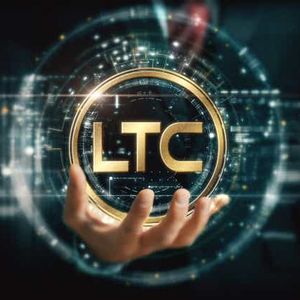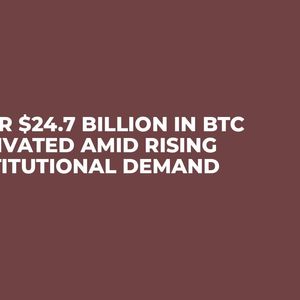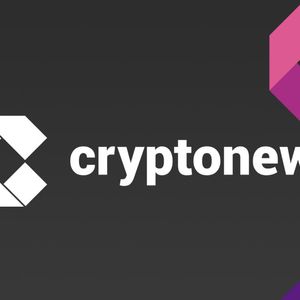LTCN: Spot Litecoin ETFs May Be Weeks Away
6 min read
Summary Litecoin and Grayscale Litecoin Trust have underperformed recently, but I still see value due to broader digital asset market conditions. Approval of spot Litecoin ETFs appears likely, with analysts giving high odds; Canary Capital’s ETF is in ‘Pre Launch’ status per the DTCC website. Litecoin’s utility and active user growth contrast with Bitcoin’s scaling stagnation, suggesting LTC is undervalued relative to BTC on PoW peers. LTCN trades at a discount to NAV, presenting a potential arbitrage opportunity if spot ETFs are approved, boosting LTCN’s value. In the roughly three months since I last covered Litecoin ( LTC-USD ) and the Grayscale Litecoin Trust ( LTCN ) for Seeking Alpha, the performances of both the coin and the fund have been admittedly lack-luster. Data by YCharts When I wrote my last piece, LTCN was trading at a small premium relative to the prior year. As of mid-April, not only is that premium gone entirely but the fund has shifted back to a NAV rate discount for the first time since Q4-23. In this update, we’ll look at the latest pertaining to spot Litecoin ETFs, Litecoin’s continued usage story, and why I still like both LTC and LTCN given the broader setup in the digital asset market. Spot Litecoin ETF Developments While it isn’t yet exactly clear when (or even if) spot ETFs will be approved by the SEC, the indications are that they will be coming at some point in the future. Consider that Canary Capital’s Litecoin ETF is currently listed on the Depository Trust & Clearing Corporation’s website as a ‘Pre Launch’ ticker: LTCC Ticker in Pre Launch (DTCC) This doesn’t actually mean that LTCC is guaranteed to become an approved ETF, but it is a positive sign as it shows the issuer is becoming more prepared for approval. ETF Analyst Expectations as of 2/10/25 (James Seyffart/X) Bloomberg ETF analysts Eric Balchunas and James Seyffart previously put LTC ETF approval odds at 90%. Furthermore, Seyffart said in early-February that he believes LTC will be the next ETF approved in the United States. In March, the SEC delayed a decision on the Canary fund and the next deadline is May 5th, which as of article submission, is less than three weeks away. Revisiting The Litecoin Thesis A view that I’ve steadfastly held in my coverage of cryptocurrencies through the years is the idea that the networks where these assets live have to actually offer the world real utility. Otherwise, speculation on price is likely the only real point of existence. That’s not the future the cypherpunks who originally advocated for Bitcoin ( BTC-USD ) envisioned. But to a large degree, it’s indeed the reality that we have today. That doesn’t mean it has to remain the case going forward, and I’ve long suspected that through the bullish/bearish cycles that crypto speculators endure, the assets that will ultimately remain are the ones that offer the very utility I mentioned. There are many in the space who will argue that Bitcoin can do just about anything. BTC is viewed as ‘Digital Gold’ and any end user payments for smaller transactions can simply happen on secondary scaling layers. Thus, LTC need not exist. Yet lo and behold, after over 13 years in the market, Litecoin still commands a market capitalization of nearly $6 billion and a market cap rank of 21. For a coin that some feel is totally obsolete, this is impressive staying power, in my view. And my thinking here is the reason LTC still matters is precisely because scaling Bitcoin efforts have stagnated while Litecoin usage continues to grow. 30 Day Average DAAs (CoinMetrics) I’ve shared this chart in prior articles, but I’m sharing it again because I believe it helps illustrate two things; first, Litecoin’s 30-day average DAA trend remains up since the beginning of 2021 while Bitcoin’s is actually down. Second, when Bitcoin’s transaction fees spiked in late-2023 and early-2024, crypto’s user base shifted to Litecoin. I think another way to look at this though is through what I’ll call the BTC/LTC DAA Multiple: 90 Day Average DAA Multiple (CoinMetrics) This logarithmic chart shows Bitcoin DAAs divided by Litecoin DAAs on a rolling 90-day average. This is essentially another way of showing Bitcoin losing active user share to Litecoin since 2017. Back then, the BTC/LTC DAA multiple was 60x. Today, it’s just 2x, and it even spent some of 2024 under 2x. This isn’t the only multiple that I think matters. You won’t get any argument from me that Bitcoin settles far more in USD-denominated value each day. Over the last 30 days, Bitcoin has averaged about $9 billion in daily transferred value, while Litecoin’s figure is closer to $86 million. To be sure, a massive difference. But adjusting for the differences in market capitalization, LTC is far cheaper than BTC: 30 Day Average NVT Ratio (CoinMetrics) This is the 30-day average NVT ratio; which divides the market capitalization of the coin by the USD-denominated transferred value on the network. I’ve added Dogecoin ( DOGE-USD ) and Bitcoin Cash ( BCH-USD ) to show that LTC is indeed the outlier. At a 77 NVT ratio, Litecoin’s valuation continues to trade at a massive discount to Proof-of-Work payment chain peers. DOGE, BCH, and BTC all command NVT ratios in excess of 200. So this is either a bad framework, or Litecoin is undervalued relative to the rest of the market. I continue to believe the issue lies with the valuations rather than the framework. Grayscale Litecoin Trust I’ll point out again that my issue with LTCN as an investment in recent years hasn’t been due to the underlying asset or its attractiveness as a digital currency. My problem with the fund over the last year and change has simply been one of valuation. At a significant multiple over the underlying value of the LTC, LTCN isn’t worth the price tag. However, at a discount, I like it a lot more due to what, I think, is discounted exposure to a digital asset that is also significantly discounted relative to Proof-of-Work peers. Data by YCharts And that’s exactly what we have from the market today. LTCN trades a small discount to NAV. And LTC trades a significant discount to the NVT ratios that are presently observed by natural peers BTC, BCH, and DOGE. All this said, a consideration that LTCN shareholders should remain mindful of is share unlocks through the end of the year: Grayscale LTC Holdings (CoinGlass) Grayscale held 1.48 million LTC through the trust back in February 2024. By the end of April, LTC holdings grew to 1.69 million. Though as of April 17th, most of the shares issued from that LTC growth are already unlocked. The next big unlock appears to be in mid-July, where LTC holdings grew by 5% overnight. LTC pricing likely matters here because between April 15th, 2024 and July 17th, 2024, Litecoin traded between $60-80 dollars per coin. Which means that some of these LTCN shares are likely already underwater. Will those shareholders take the loss and further depress the NAV rate? I won’t attempt to guess. Closing Thoughts Litecoin is quietly still an important asset in the cryptocurrency market. It’s one of just three coins that can be purchased through a Fidelity crypto IRA, and all indications from ETF analysts are that the spot LTC ETFs will be approved in the United States. When that happens, LTCN’s days at a discount are presumably over. So coin price being equal, buying LTCN at a discount could be a nice little arbitrage trade between now and a potential ETF conversion. Fundamentally, LTC remains highly depressed relative to similar assets. If LTC traded at the same NVT ratio as BTC, the coin price would be closer to $225.

Source: Seeking Alpha



